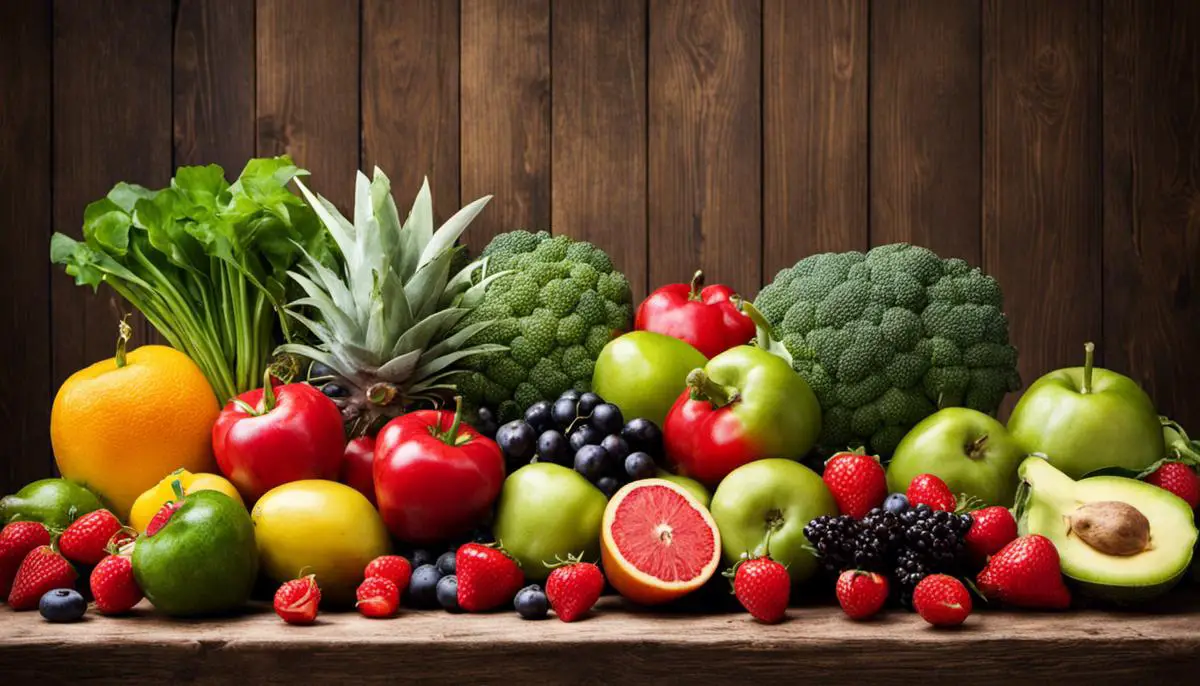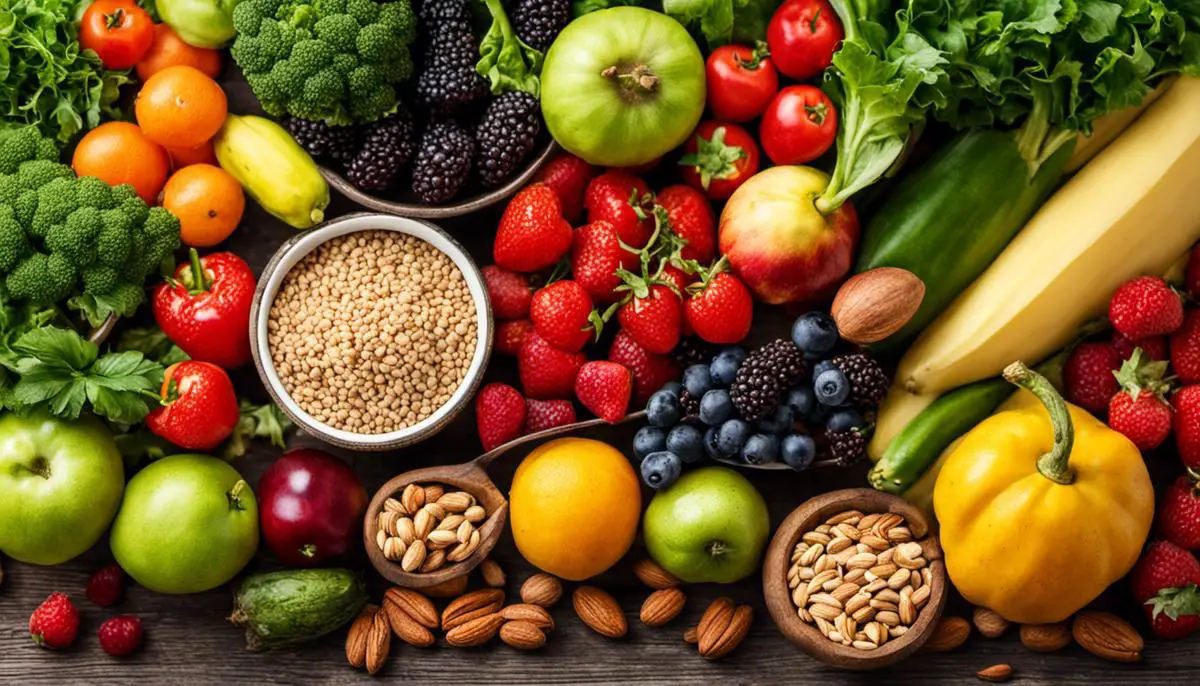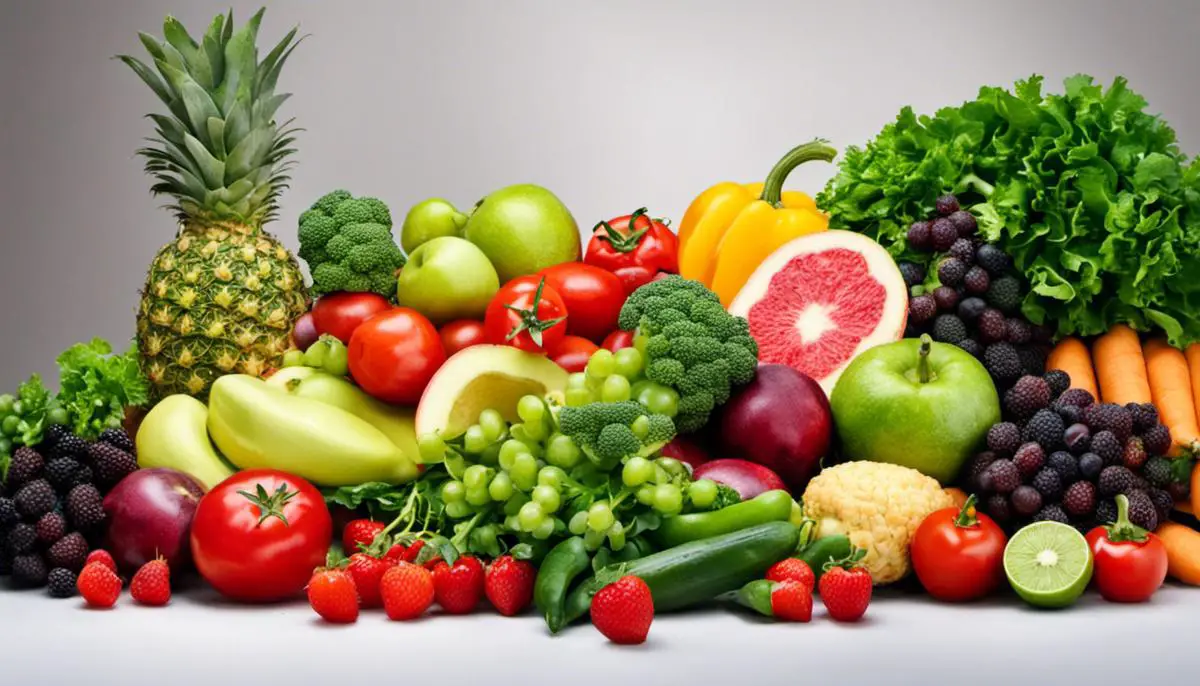At first glance, our modern food system, with its array of processed edibles and fast-paced consumption, seems far separated from the culinary habits our forebears practiced in the days of hunting, gathering, and farming. However, a practice aptly coined the Raw Food Diet harkens back to these methods, urging a return to unprocessed, uncooked nourishment in various forms. This nutritional pursuit encompasses raw veganisms, vegetarianism, and animal food diets, each championing the consumption of food in its most organic sense. Today, you are invited to delve into the nitty-gritty of this eating style, surveying its potential health benefits and potential drawbacks, learning practical ways to transition your current eating habits, and sampling a curated meal plan that could transform your perception of uncooked cuisine.
Concept and Basics of Raw Food Diet
Understanding the Raw Food Diet
The raw food diet, also known as raw foodism or rawism, is a dietary practice centered on the consumption of primarily uncooked, unprocessed, and often organic foods. The fundamental principle behind this dietary lifestyle is the belief that heating food above approximately 104 to 118 degrees Fahrenheit (40 to 48 Celsius) compromises the nutritional value of the food. Advocates argue that cooking destroys enzymes, reduces vitamin and mineral content, and eradicates the life force believed to reside in raw foods.
Types of Raw Food Diet
The raw food diet is not a one-size-fits-all kind of lifestyle but instead consists of several different variations depending on a person’s preference or nutritional needs. Three common types are raw vegetarianism, raw veganism, and the raw animal foods diet.
Raw vegetarians consume raw fruits, vegetables, nuts, seeds, and unpasteurized or fermented dairy products. Raw vegans, on the other hand, completely forego the consumption of all animal products. They instead consume uncooked, unprocessed, plant-based foods, including fruits, vegetables, grains, legumes, nuts and seeds.
The raw animal foods diet may include uncooked, uncured, unsmoked and unprocessed meat, dairy, eggs, and even seafood. This can be a controversial choice due to the potential risk of microbial intoxication or infection from uncooked or improperly handled animal products.
Health Benefits of the Raw Food Diet
The raw food diet offers several potential health benefits primarily due to its high intake of fruits and vegetables, which are loaded with essential vitamins, minerals, phytochemicals, and antioxidants. These substances are believed to help fight chronic diseases such as heart disease, diabetes, obesity, and in some cases, cancer.
Increased energy levels are commonly reported amongst raw food dieters. A clearer skin, improved digestion and weight loss are some other benefits associated with this dietary lifestyle due to higher roughage consumption and lower intake of processed foods and added sugars.
Although highly nutritious, relying solely on a raw food diet could also potentially lead to nutrient deficiencies. Important nutrients like protein, vitamin B-12, iron, and others could be lacking since many of them are available in larger amounts in cooked or processed foods. Therefore, careful planning and possibly supplementation may be required to adhere to a raw food diet healthfully.
Final Thoughts
The raw food diet, focusing on the consumption of uncooked, organic produce in its natural state, offers potential health benefits while promoting clean eating. However, the range of nutrients potentially absent from the diet underscores the importance of careful planning and deep understanding. Given this, it is critical to seek advice from healthcare professionals or dieticians before incorporating such a significant change like raw foodism into one’s lifestyle to ensure all nutritional requirements are adequately met.

Health Benefits and Drawbacks
The Advantages of a Raw Food Diet
The raw food diet primarily comprises various unprocessed organic foods, largely plant-based including fruits, vegetables, seeds, nuts, and sprouted grains. Less commonly, the menu may also feature raw dairy products, raw eggs, raw meat, and raw fish. The dietary setup sets the stage for a host of corresponding health benefits.
Key among these benefits is weight loss, as the majority of raw foods are low in calories, sodium, and fat, but high in fiber. This makes the raw food diet an efficient way to shed those excess pounds, a perspective supported by a research study from the Journal of Nutrition. The study posits that incorporating a higher quantity of raw vegetables and fruits in one’s diet delivers transformative impact on maintaining a healthy body weight.
Better digestion is also a positive outcome of the raw food diet, facilitated by the role of enzymes which are proteins that usher in chemical reactions within the body. Some raw diet enthusiasts argue that heating food beyond 104-118°F (40-48°C) can impair or eliminate these enzymes. The scientific basis for this claim, however, remains relatively sparse.
Finally, the raw food diet aids in boosting the intake of dietary fibers, which are linked to a wide gamut of health benefits including improved digestive health, weight control, blood sugar level management, and heart disease risk mitigation. The National Institutes of Health advocates increased fiber consumption as an effective strategy to combat obesity and metabolic syndrome.
The Prospective Nutritional Shortcomings of a Raw Food Diet
Despite the multitude of benefits a raw food diet can bring, there are potential nutritional deficiencies that should be considered. Careful planning is key, as the diet can be lacking in sufficient protein, vitamin B12, iron, and omega-3 fatty acids without it.
Protein is a necessary macronutrient that our bodies require to repair tissues and perform a myriad of other functions. Although there are plant-sourced proteins, many individuals following a raw food regimen may find meeting their daily protein intake demanding without the inclusion of animal-based products.
On the same note, vitamin B12, which plays an integral role in nerve functioning and red blood cell production, might be in short supply for those following a vegan raw food diet. This is because it is naturally found in animal products. Alarmingly, research published in The American Journal of Clinical Nutrition asserts that a significant 92% of vegans don’t get enough of this crucial nutrient.
Furthermore, the human body absorbs iron from meat more efficiently than from iron-rich plant foods like spinach and beans. Therefore, those adhering to a strict raw food diet could potentially face iron deficiency.
The same goes for omega-3 fatty acids which are essential for heart health and inflammation reduction. Certain varieties of fatty fish, which aren’t typically a part of a raw food diet, are an important source of these nutrients.
Wrapping up, a raw food diet does offer a variety of health advantages such as promoting weight loss and improving digestion, but the possibility of nutrient deficiencies cannot be overlooked. As such, it is strongly recommended to thoroughly plan the diet and seek professional advice either from a healthcare provider or a certified dietitian to fill any potential nutritional voids.

Transitioning to a Raw Food Diet
Transitioning Adequately to a Raw Food Diet: Effective Guidelines and Recommendations
Switching from an ordinary diet to a raw food diet involves careful planning and gradual modifications. The initial move is to enhance the amount of raw fruits and vegetables you consume daily, followed by a steady reduction in the intake of processed and cooked foods.
The first stage involves a stepwise increase in your consumption of raw fruits and vegetables.
Such food items are fundamental components of a raw food diet. Adding more of these to your diet not only supplies essential nutrients but also preps your digestive system for a diet predominantly comprising raw foods. You could incorporate this change by incorporating fresh salads into your meals, consuming fresh fruits as mid-day snacks, and even trying out different raw food recipes.
Moving onto the second step, simultaneously you should start reducing your intake of processed and cooked foods.
This can be done by cutting down on fast food, takeaways, canned foods and processed snacks. You can start by eliminating these foods one at a time from your regular diet. However, do note that the transition should not be abrupt as it could lead to cravings, making the transition harder.
Dealing with cravings while transitioning to a raw food diet can be quite challenging.
However, conquering these cravings is an integral part of the process. To manage these cravings, you can try alternatives like raw snacks made from nuts and fruits, or smoothies, which could help you stay on track. Also, mindfulness and distraction techniques like deep breathing, taking a walk, or doing a quick workout can help combat these cravings.
Creating your raw food kitchen is another vital aspect of transitioning to a raw food diet.
Investing in equipment like a good quality blender, juicer, and food processor can be beneficial. These appliances help in making a variety of raw food dishes and recipes a breeze. Stocking up on raw nuts, seeds, dried fruits, and a variety of fruits and vegetables is also necessary.
Challenges of a Raw Food Diet in Social Situations
Sticking to a raw food diet while navigating social settings can be challenging. Many events like dinner parties or brunch gatherings may not necessarily cater to the raw food lifestyle. However, such challenges can be overcome by opting for raw food choices like salads or fruit platters. If feasible, you could request hosts to include specific raw food dishes. Alternatively, you can eat a raw meal before attending such events to ensure your dietary needs are met.

Sample Raw Food Diet Plan and Recipes
Digging Deeper: The Composition of a Raw Food Diet
A raw food diet is predominantly made up of uncooked, unprocessed, whole foods, which have not been subjected to heat above 118 degrees Fahrenheit. Primarily, the diet includes fresh fruits, vegetables, seeds, grains, nuts, and legumes.You might come across individuals who include raw eggs, dairy, meat, and fish in their raw food diet. However, it’s essential to note that how you approach a raw food diet is highly personal and may be varied depending on an individual’s specific dietary needs.
Sample Menu
A sample day on a raw food diet may look as follows:
- Breakfast: A fruit salad made with a variety of fruits such as bananas, berries, and oranges, sprinkled with a handful of raw sunflower seeds.
- Snack: A green juice made with cucumber, celery, spinach, and apple.
- Lunch: A raw vegetable salad filled with colorful vegetables like cucumber, cherry tomatoes, bell peppers, and topped with avocado. This can be dressed with raw apple cider vinegar and olive oil.
- Snack: A handful of raw nuts such as almonds or pistachios, or a piece of fruit.
- Dinner: Zucchini noodles, or “zoodles,” tossed with a raw marinara sauce made from soaked sundried tomatoes, fresh tomatoes, garlic, and fresh basil.
- Dessert: Raw chocolate mousse made from avocados, raw cacao powder, and natural sweeteners like raw honey or maple syrup.
Simple Recipes
Here are some simple and easy recipes to incorporate into a raw food diet:
- Green Smoothie: A green smoothie is a great way to pack in nutrients first thing in the morning or as a snack throughout the day. Blend spinach, banana, chia seeds, and some water until smooth.
- Raw Almond Energy Balls: These are an easy snack to make ahead. Blend soaked almonds in a food processor until they become a coarse meal. Add dates, raisins, and a bit of vanilla extract. Blend until everything comes together. Roll the mixture into small balls and store them in the fridge.
- Marinated Mushrooms: Thinly slice mushrooms and marinate them in a mixture of olive oil, lemon juice, garlic, thyme, and sea salt. These mushrooms can be used as a topping for a raw salad, or eaten as is for a savory snack.
It’s important when following a raw food diet to carefully plan meals to ensure nutritional needs are met. Consulting a dietitian is recommended.
Contrary to Popular Beliefs
The raw food diet is often perceived as restrictive with the assumption that options are limited to salads and smoothies. However, a diverse and satisfying raw food diet can include much more than just raw fruits and vegetables. Soaked and sprouted grains and legumes, raw nuts and seeds, and fermented foods add variety, nutrients and textures. Depending on personal preference, the use of dehydrators can imitate the textures and warmth of cooked food without exceeding 118 degrees Fahrenheit. Avocados, bananas, coconut milk, soaked nuts, and seeds are frequently used to create satisfying and creamy elements in a raw food diet.
Finally, a raw food diet does not mean 100% of the food consumed needs to be raw. Most raw foodists follow an 80/20 or 75/25 rule where the majority of their diet is raw. This balance maintains the benefits of the raw food diet while adding versatility and ease. The raw food diet can be seen as a creative and mindful approach to consuming whole, unprocessed foods rather than a rigid and restrictive principle.

This exploration of the Raw Food Diet paints a complex portrait — this isn’t just another dietary fad. It’s a lifestyle choice inspired by a simpler time when humans ate what nature offered them. This diet, while having its fair share of potential benefits such as weight loss, improved digestion, and higher dietary fiber intake, also presents its specific challenges. Stepping from a world of processed foods towards a simpler, rawer variation of sustenance requires motivation and adaptation. From making practical changes to your grocery shopping habits to learning new ways to prepare meals, the transition can be an exciting journey. Above all, remember that being informed is paramount — understanding the intricacies and caveats can help foster a healthier relationship with the food you eat.
